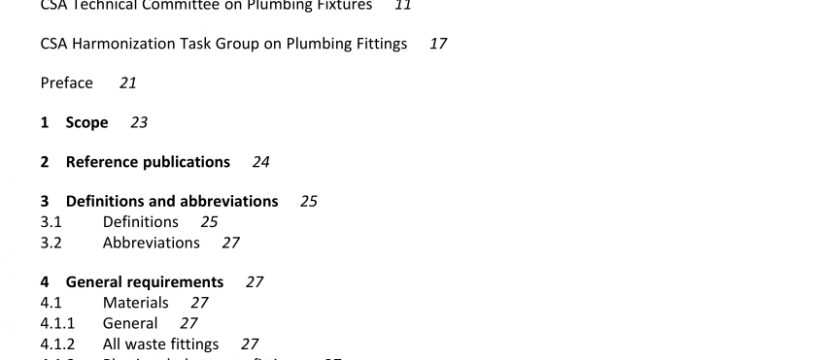ASME A112.18.2:2020 pdf free download
ASME A112.18.2:2020 pdf free download.Plumbing waste fittings
5.6.3.2 Test procedure
The water absorption test shall be conducted as follows:
a) Use specimens (one each) of any plastic strainer component that will be exposed to water.
b) Condition the specimens for 24 h in an oven at 50 ± 3 °C (122 ± 5 °F).
c) Cool the specimens in a desiccator.
d) Weigh the specimens immediately after cooling to ambient room temperature.
e) Place the specimens in distilled water at 23 ± 1 °C (73 ± 2 °F) for 24 h, with the specimens entirely immersed and resting on an edge.
f) At the end of the 24 h, remove the specimens from the water, one at a time.
g) Wipe off all surface water with a dry cloth.
h) Weigh the specimens within 30 s of removal from the water.
i) Calculate the percentage increase in mass to the nearest 0.01%.
5.6.4.2 Test procedure
The point impact test shall be conducted as follows:
a) Install the specimen in a kitchen sink as it would be installed in normal service.
b) Drop a 38 mm (1.5 in) diameter steel ball weighing 230 g (0.5 lb) from a height of 600 mm (24 in) so that it strikes the upper flat rim surface of the strainer body.
c) Drop a 38 mm (1.5 in) diameter steel ball weighing 230 g (0.5 lb) from a height of 600 mm (24 in) so that it strikes
i) another location on the rim surface; and
ii) a location on the strainer basket.
d) Rub the surface of the specimen with a sponge containing a 50% solution of tap water and water-soluble ink (either black or another contrasting colour).
e) Wipe excess solution from the specimen.
f) Check for evidence of cracks.
5.8.1 Performance requirements
The minimum flow rate for a waste fitting with all of its component parts installed shall be 27 L/min (7.0 gpm) when a sustained water head of 150 mm (6.0 in) is applied above the inlet and the outlet is open to the atmosphere.
For purposes of determining compliance with this flow rate, an observed or calculated value shall be rounded “to the nearest unit” in the last right-hand digit used in expressing the specification limit in accordance with the rounding method specified in ASTM E29.
ASME A112.18.2:2020 pdf free download
